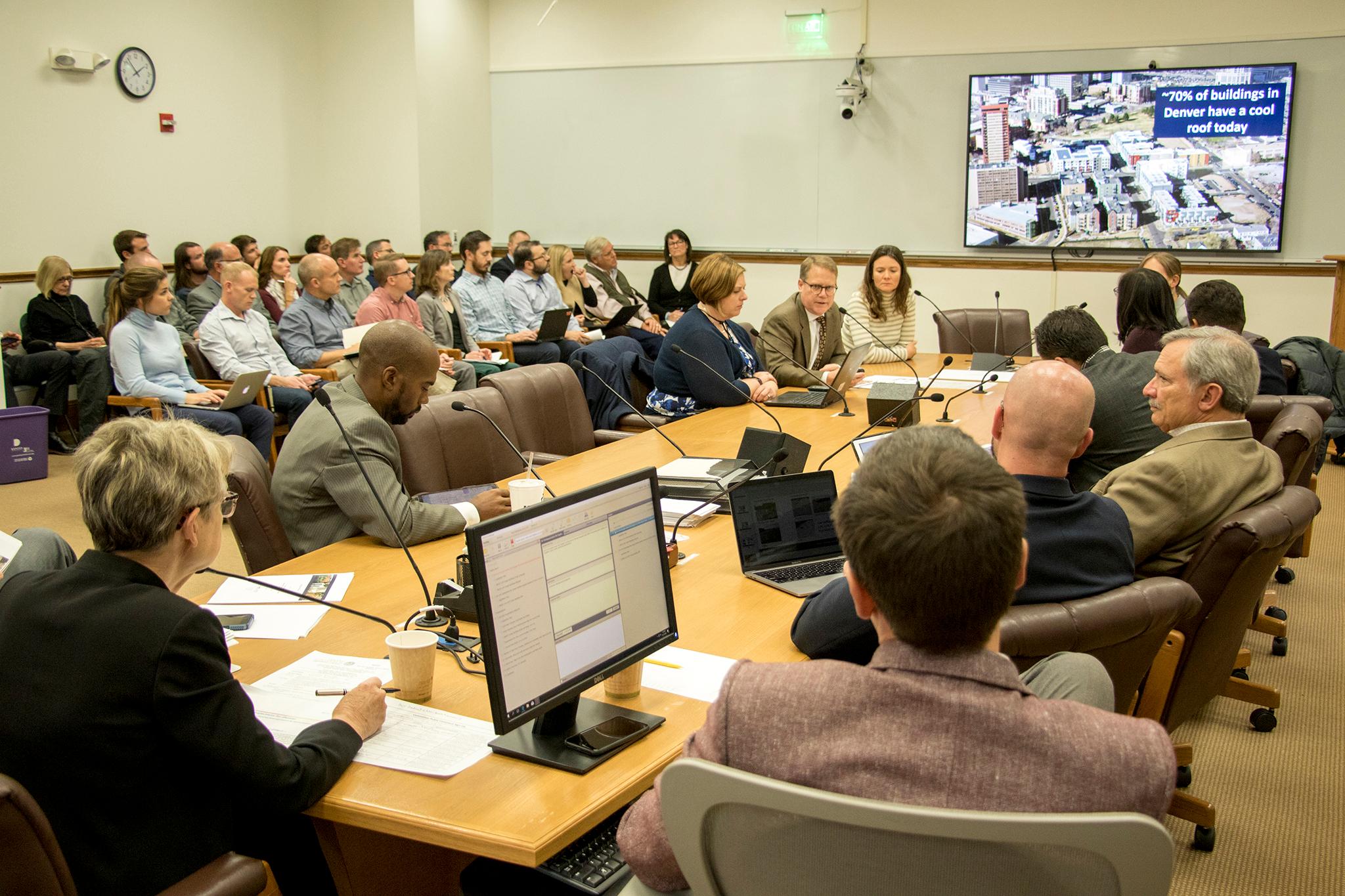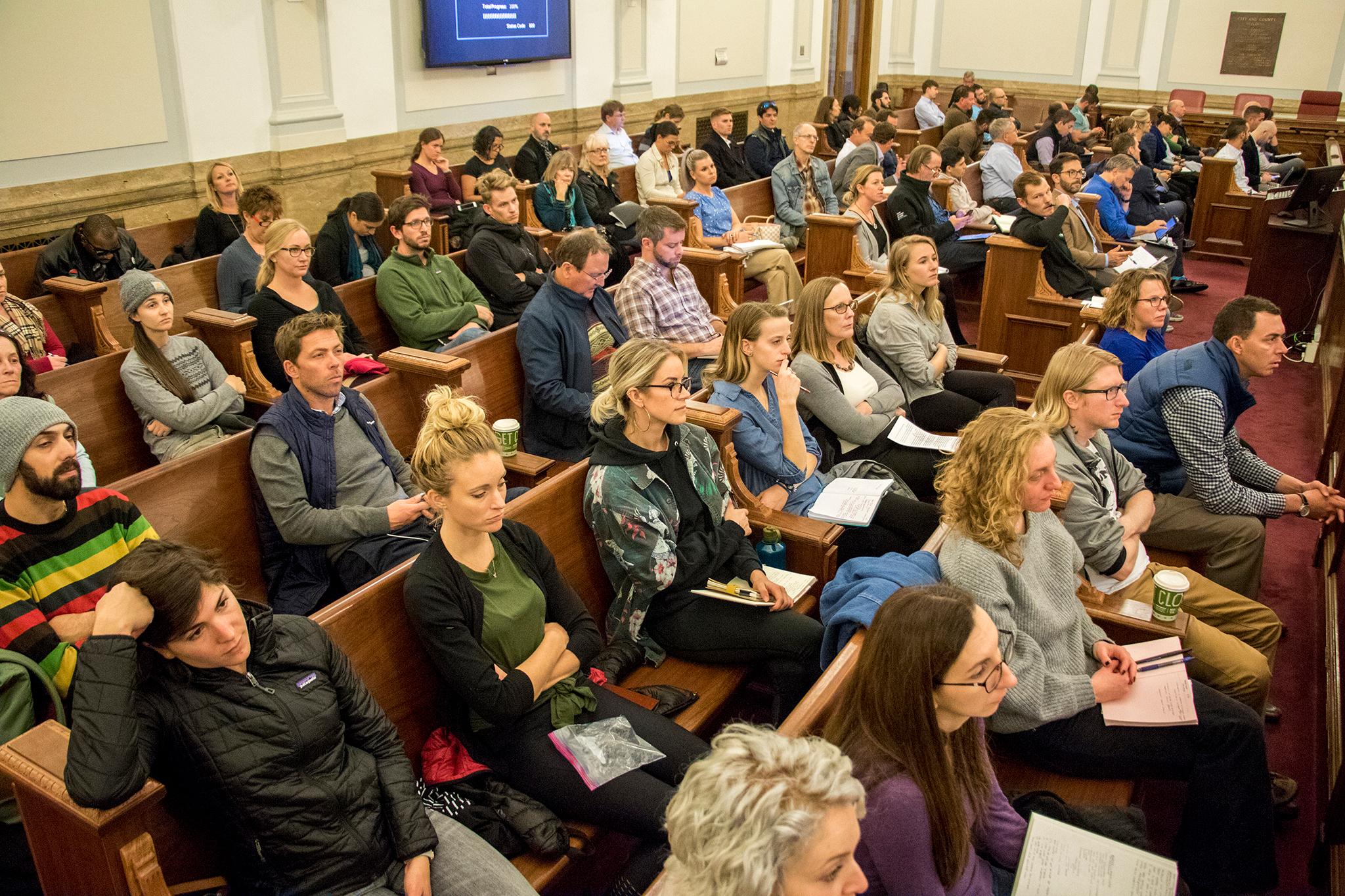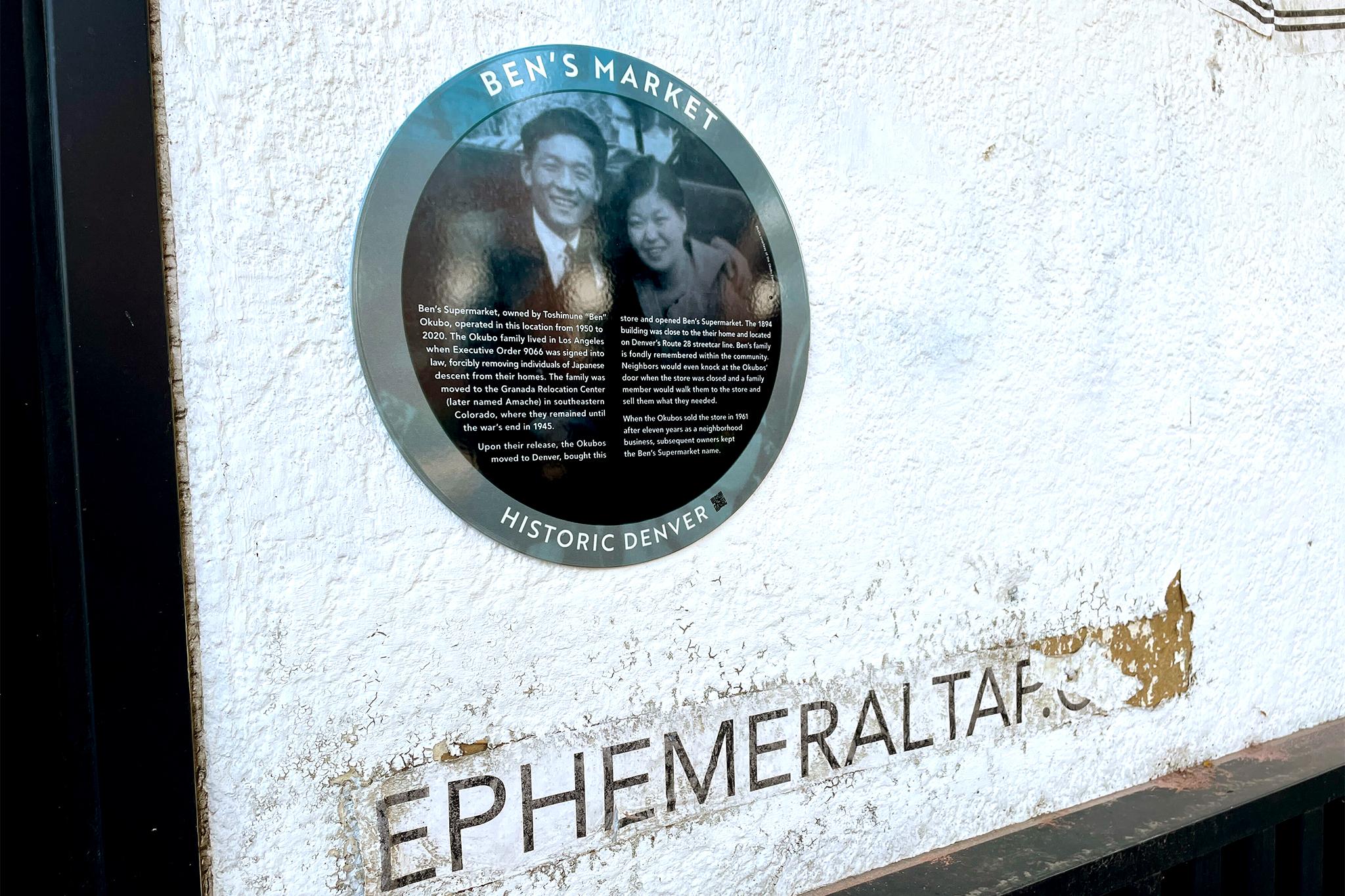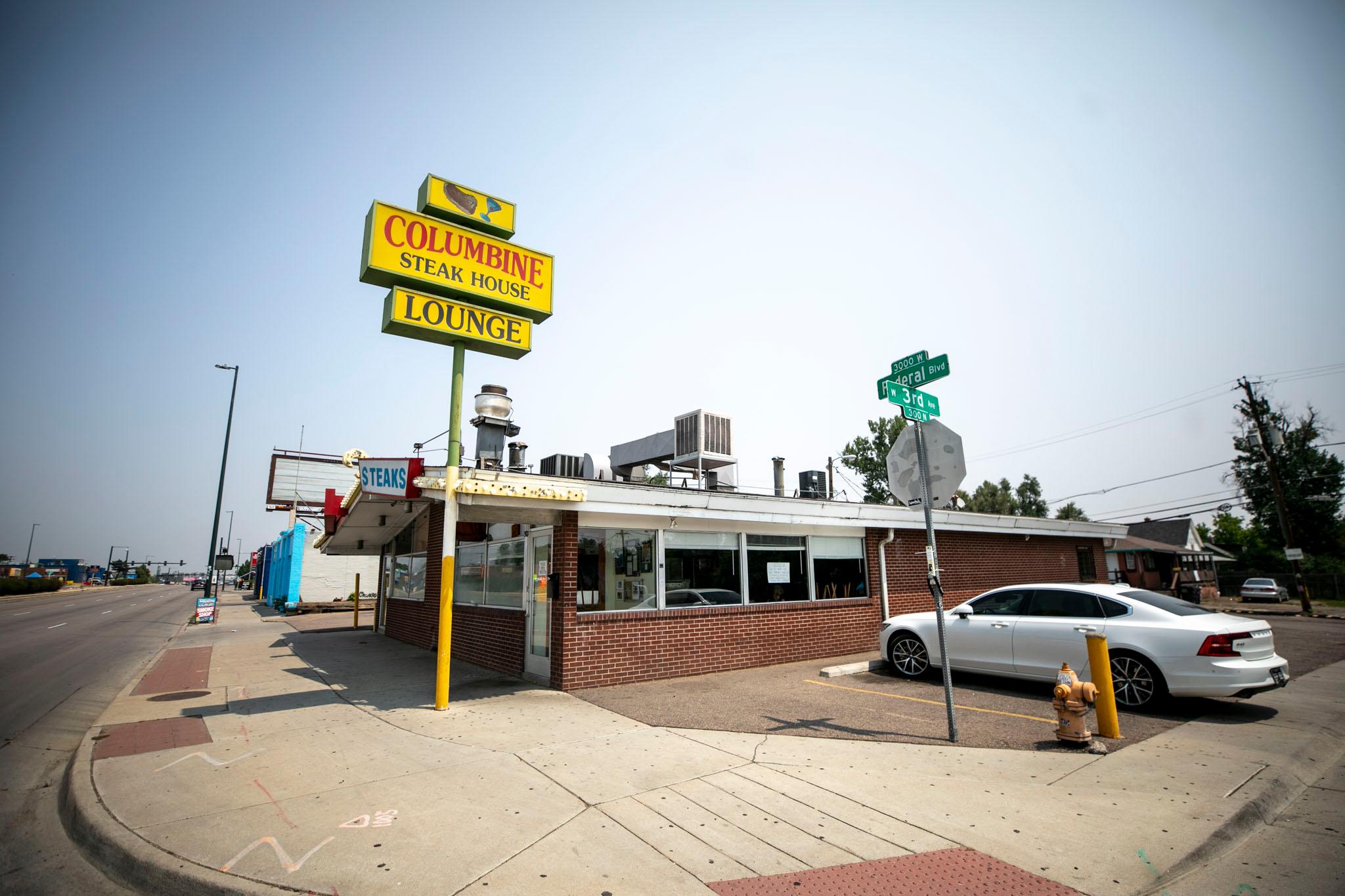UPDATE, Mon., Oct. 22: Denver City Council voted to advance the new green roofs ordinance with without an amendment that requires the city to measure the law's effects and report out to the public. That piece should get taken care of when the rules and regulations are written, Councilwoman Mary Beth Susman said. The council will hold a public hearing and a final vote next week.
Brandon Rietheimer is not a politician. He manages a restaurant for a living.
But he is a lawmaker.
The 31-year-old forever changed how developers will construct buildings in Denver when city voters passed the Denver Green Roof Ordinance last year, a policy that requires new and existing buildings 25,000 square feet or larger to have rooftop green space.
Rietheimer, spurred by the election of Donald Trump, led the underdog ballot initiative — not because he wants pigeons to have a nice birds-eye view, but because rooftop green space curbs global warming's effects on urban areas. The policy would reduce greenhouse gas emissions and lower the temperature in Denver, which suffers from one of the worst heat island effects in the country, according to the Denver Department of Public Health and Environment.
"We set out to see what the city was doing," Rietheimer said, "and it turns out the city wasn't really doing anything. They had all these plans in place but really no way to reach them."
City Auditor Timothy O'Brien released a report in 2016 saying as much. Mayor Michael Hancock's Office of Sustainability, he found, was not functioning to meet the city's 2020 sustainability goals.
"Nobody wanted to talk to us, so if we were gonna go for it, we were gonna go the whole way," Rietheimer said.
They did, and they won, despite opposition from a well-heeled real estate industry and Mayor Hancock himself.
It was a romantic's tale of democracy in action: Rietheimer used the power of the people to change his world, because the people in power would not.

But an electrifying election night gave way to the ultimate buzz kill: a government task force.
Hancock and the real estate industry knew they had to respect the vote, but worried the ordinance, modeled after one in Toronto, would stifle development and raise housing costs by mandating more expensive buildings. So the city established a 24-person committee comprised of various city department reps, academics, the initiative's supporters (including Rietheimer), and even detractors from the real estate industry to revise the ordinance.
"The goal of the task force was to honor the vote and honor the benefits that the original ordinance would have, while making a policy that would truly work for Denver and add some flexibility to the policy where possible, and where it made sense," said Katrina Managan, the energy efficient buildings lead for the Denver Department of Health and Environment. She led the process.
In the beginning, there was some bunk.
"Some of the opponents' issues were clearly invalid and not true at all," Rietheimer said. "There was an argument that green roofs would cause the brown cloud again because it would blow dust particles off of the rooftop. And it's the complete opposite -- the plants end up trapping the dust particles in the air."

The bunk gave way to science in the form of engineering and cost studies.
They found that many Denver roofs actually couldn't handle the weight mandated by the original law. They also found that construction prices could remain relatively low without jeopardizing environmental wins if the law allowed for other options.
Those options include green roofs, but also various combinations of ground-floor green space, producing or buying up solar power, certifications by the U.S. Green Building Council, and opting out with a fee.
All buildings 25,000 square feet and up must have "cool" roofs (white roofs) under the new law proposal to reflect the heat instead of absorbing it. Existing building owners don't have to replace their roofs, but will have to follow the ordinance when it's time for a new top. You can dig deeper here.
"Because they have options now, we hope they can all find a path," Managan said. "I think the real estate industry got really comfortable here, that all buildings should be able to find a path through this ordinance that has a really good return on their investment and makes sense for their building."
Builders can opt out by paying a fee of $25 per square foot, according to the current law, that's funneled to a special revenue fund for green projects. But the task force is now recommending a fee of $50 to $90 per square foot to cover the cost of Denver installing urban green space on property owners' behalf.
Developers and property owners will pay more under the new law no matter what, but not nearly as much as the original had them on the hook for. Compared to the 2017 ordinance, the new proposal would cost owners between 20 and 90 percent less, a cost study shows.
A special city council committee examined the law Thursday and advanced the legislation to the full council floor in a kumbaya moment.
The proposal, approved 7-0, will have a public hearing and a vote later this year.
Almost everybody's happy -- including Rietheimer and Kathie Barstnar, executive director of the Colorado Commercial Real Estate Development Association, who was initially one of the initiative's most outspoken opponents.
"I have to say that the work done by the stakeholder task force should be a shining example of what can be accomplished when people are willing to come together and work to make something happen in a compromised format, rather than protecting sacred ground," Barstnar said.
The process probably couldn't have happened any other way. It took an army of lawyers, industry experts, and city staffers to get to this point. City Council President Jolon Clark, who sat on the task force, said the law's evolution was par for the course.
"There is this current of people who say, 'When the voters speak, they speak unilaterally and it's on stone tablets and you can't change it,'" Clark said. "And that is not the case. Built into our charter is a mechanism by which we can change and even repeal what the voters have put on there for good reason. Brandon had the intent but not the language, so there's always the question of unintended consequences."

Not everyone was as optimistic. Some members of the roofing industry opposed the cool-roof mandate Thursday.
Ellen Thorp, a consultant representing roofers, argued that the city's analysis doesn't align with the industry's stance, and that "the roofing community is unified in its opposition to the cool-roof mandate." Though some roofing experts involved with the task force spoke in favor of the mandate, the industry could represent a speed bump when the ordinance goes before the full council.













